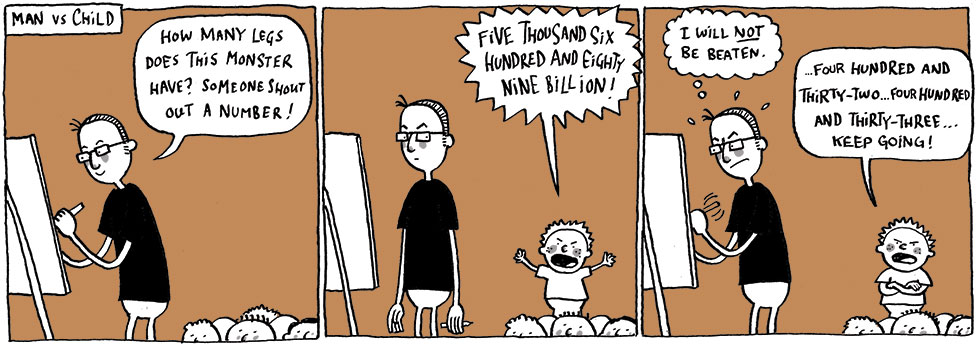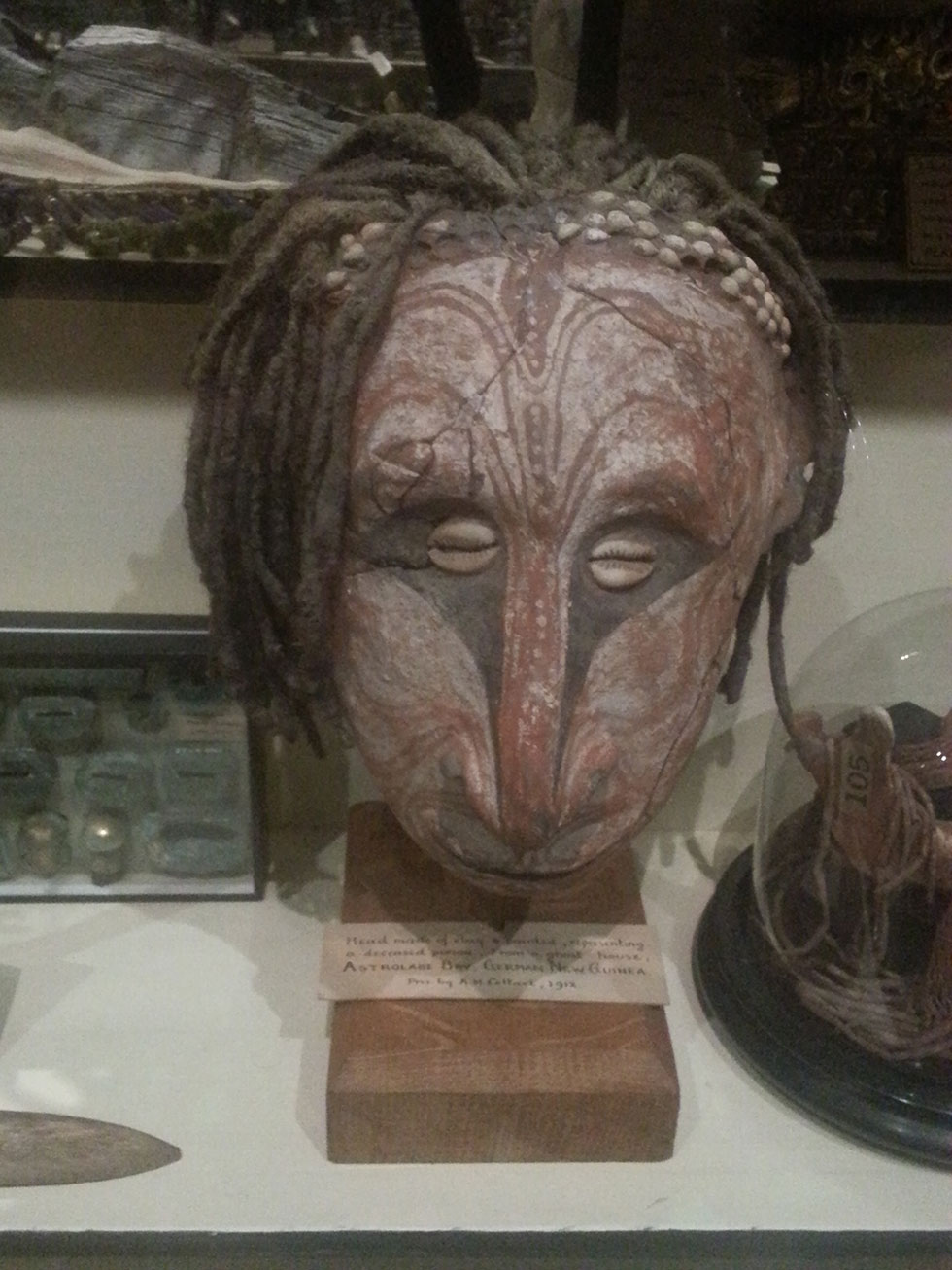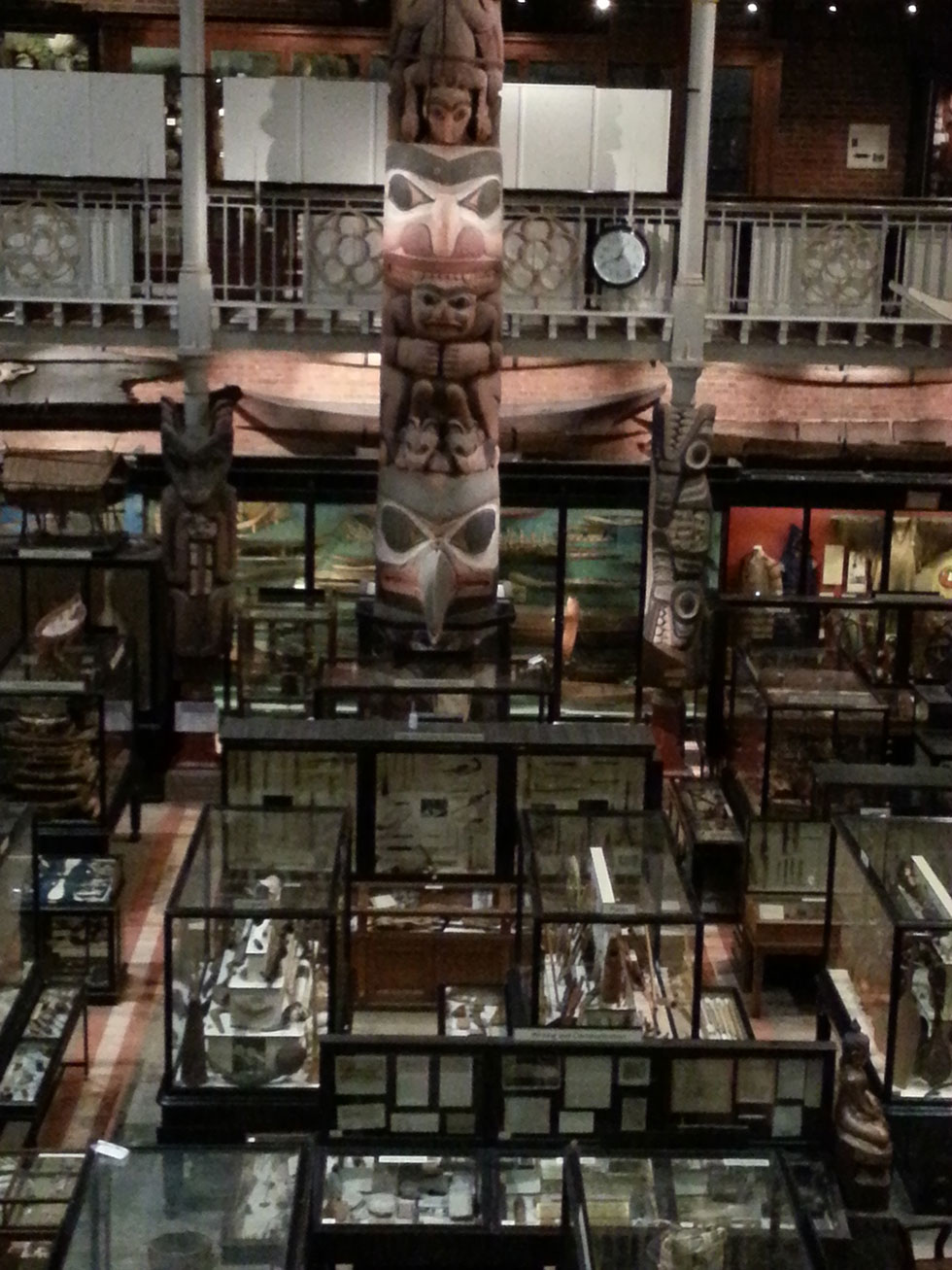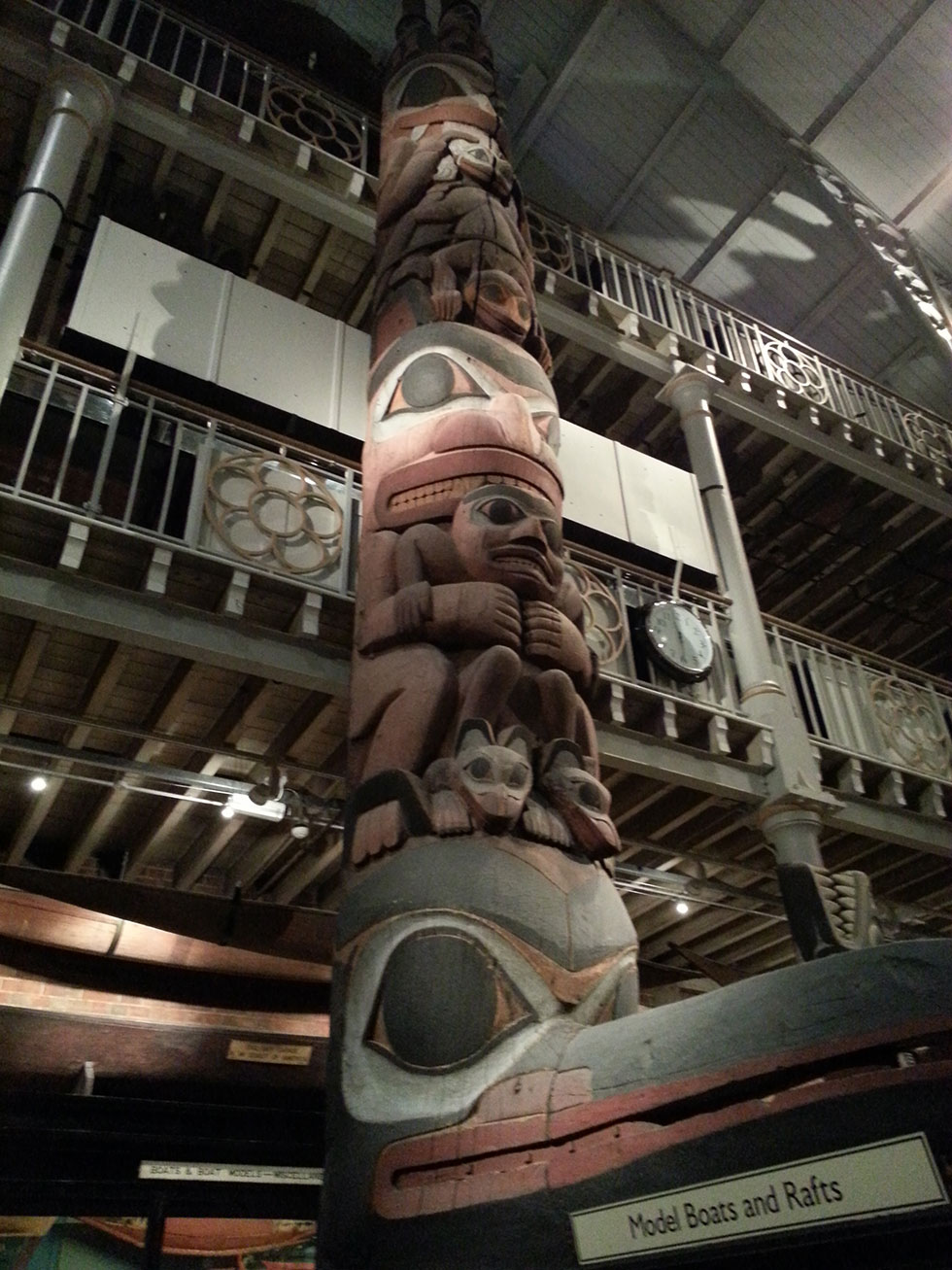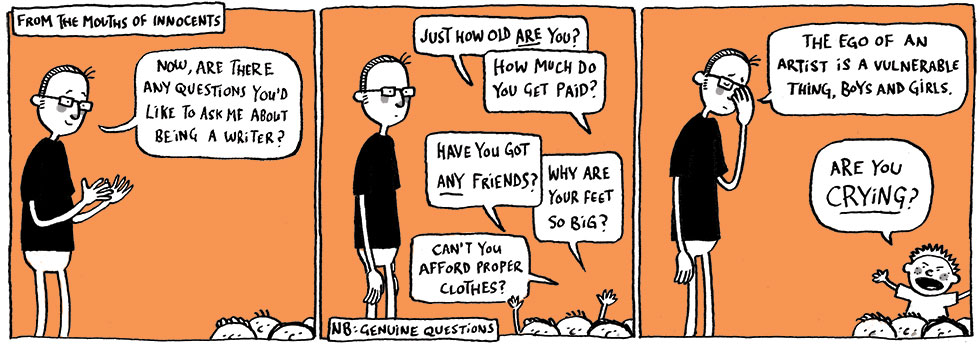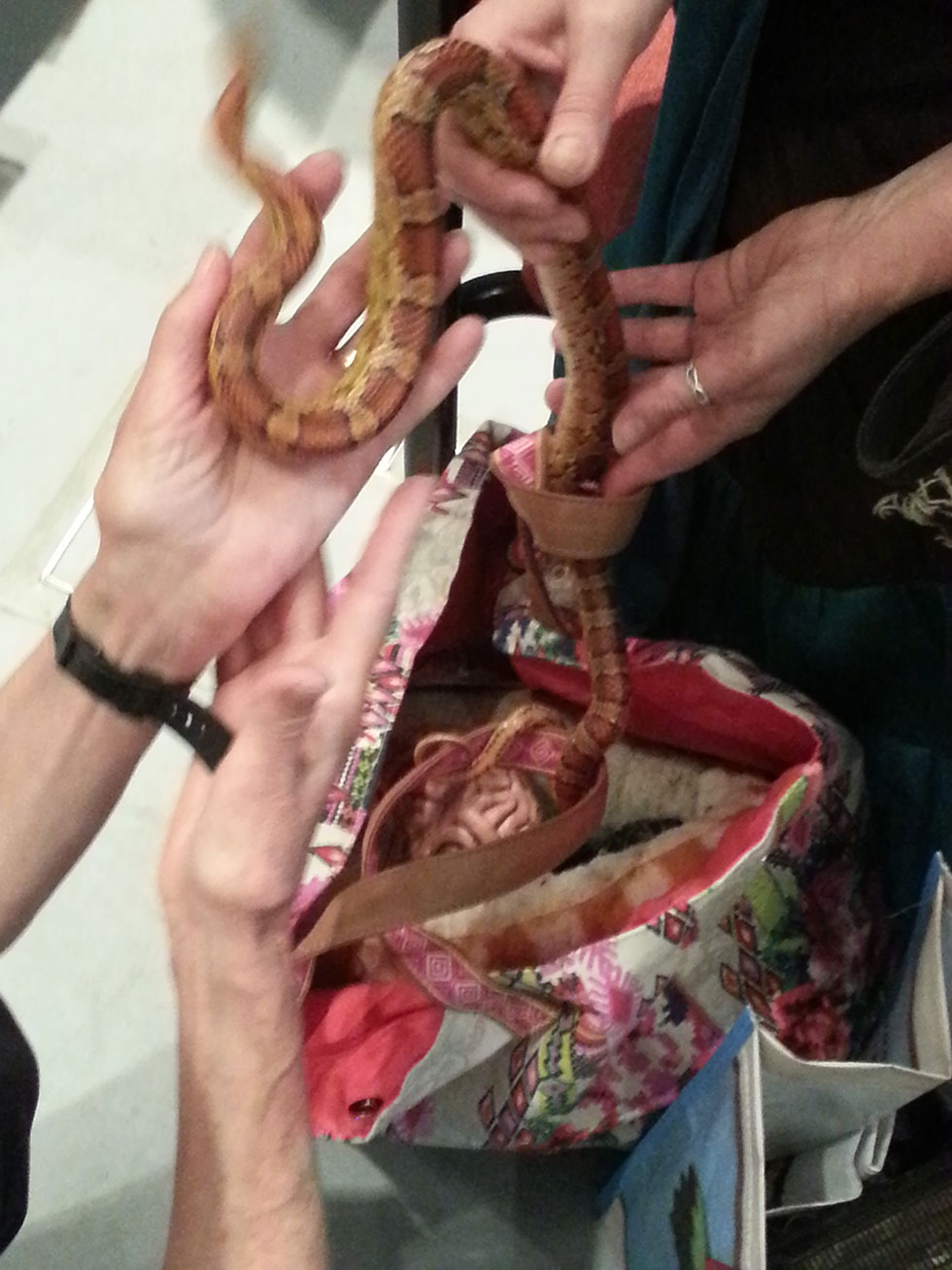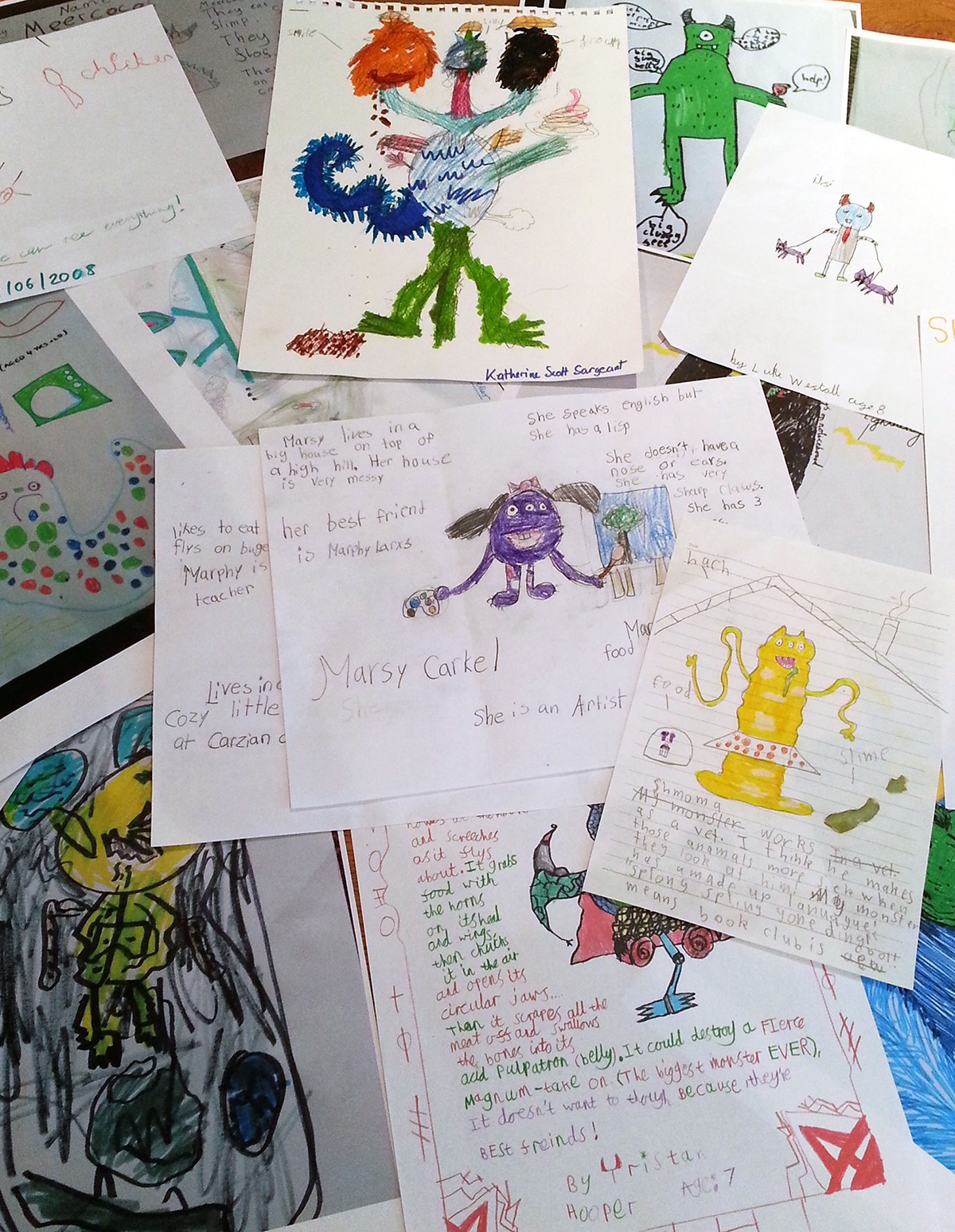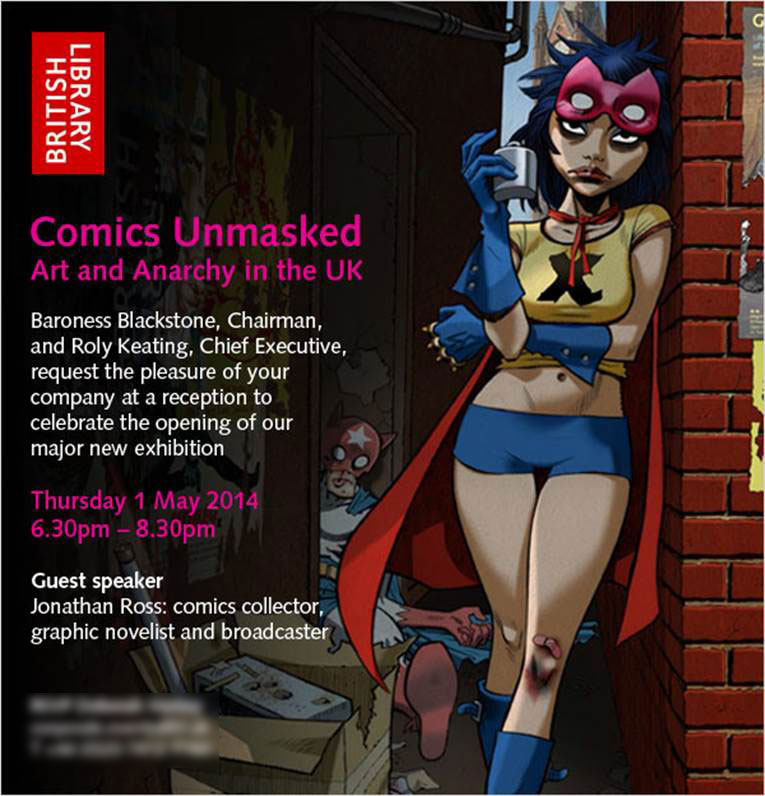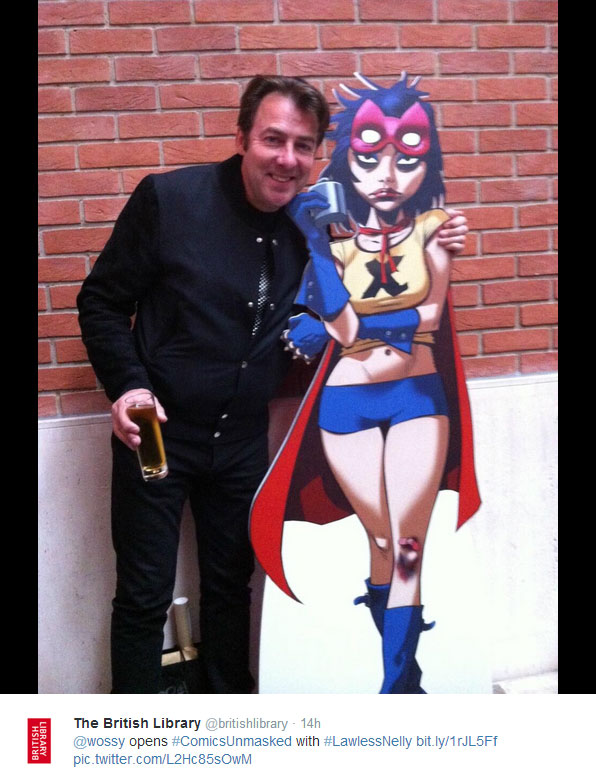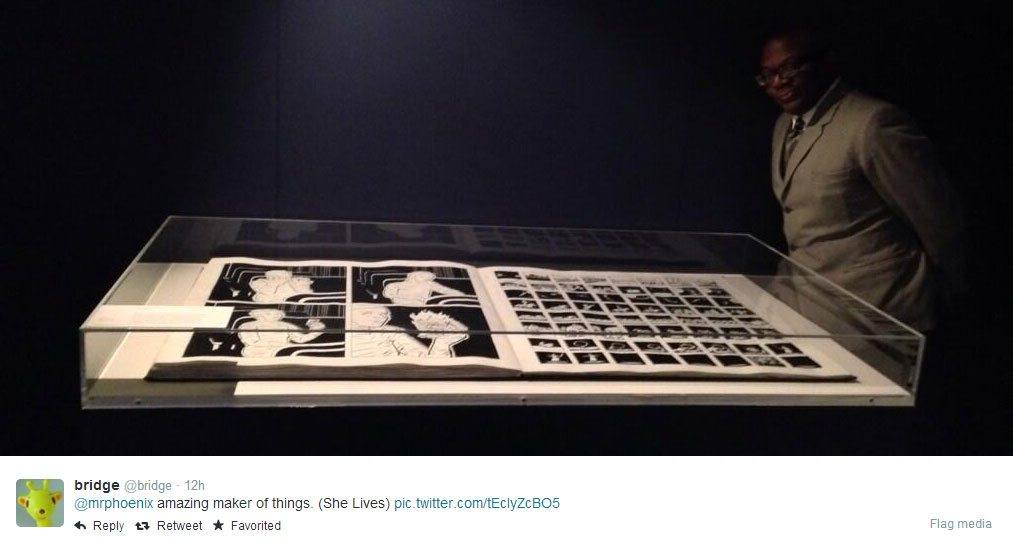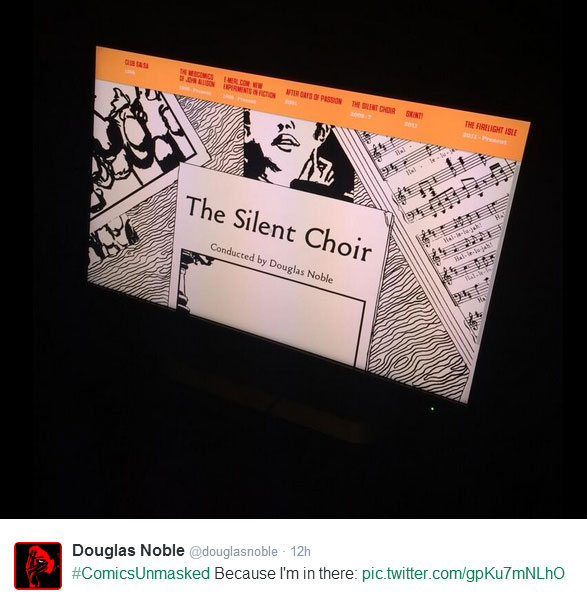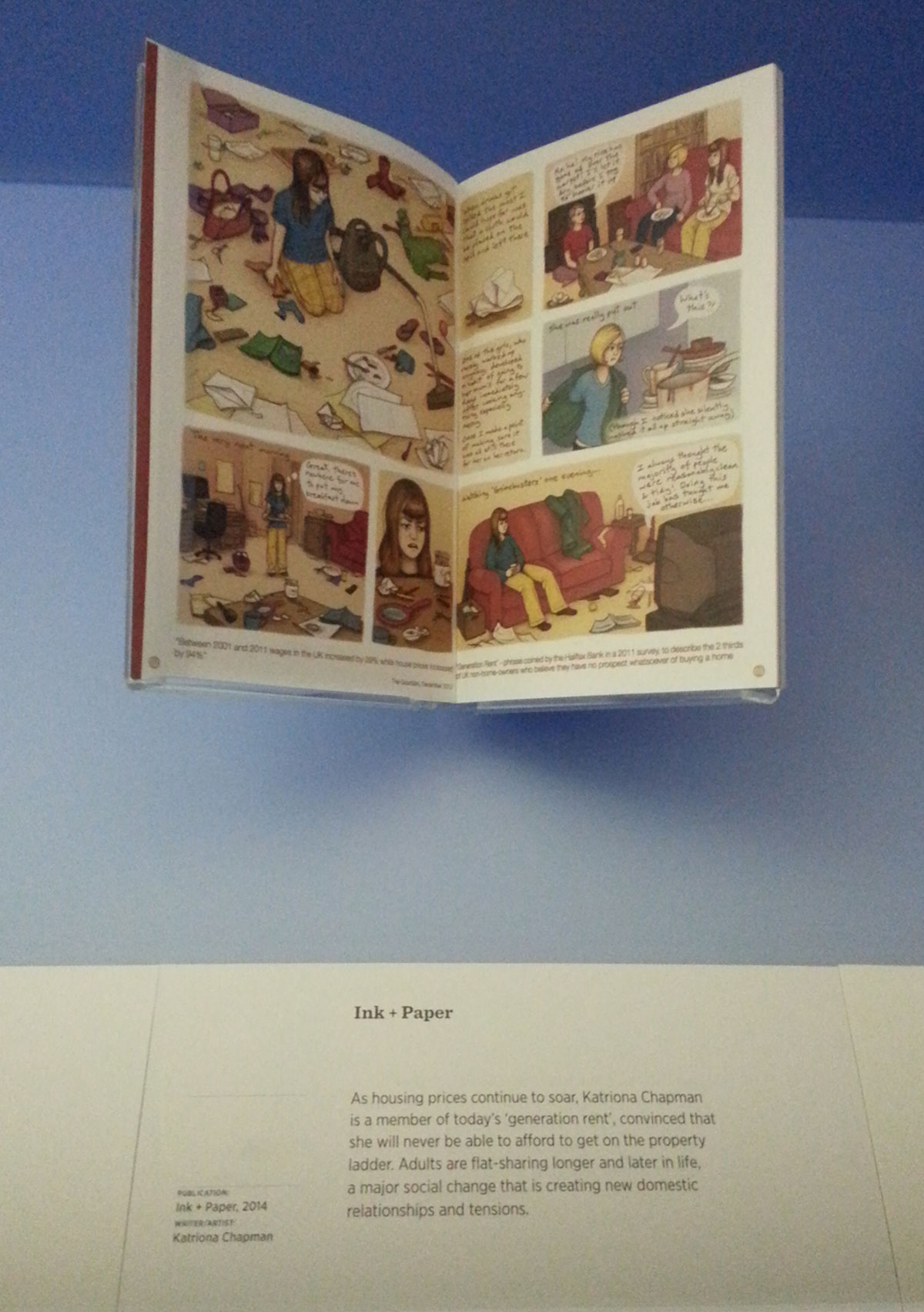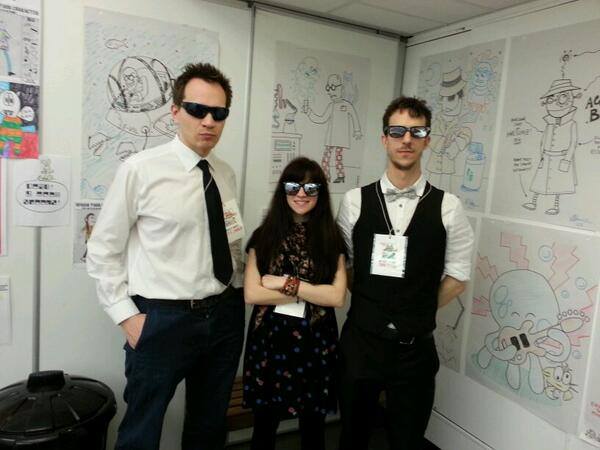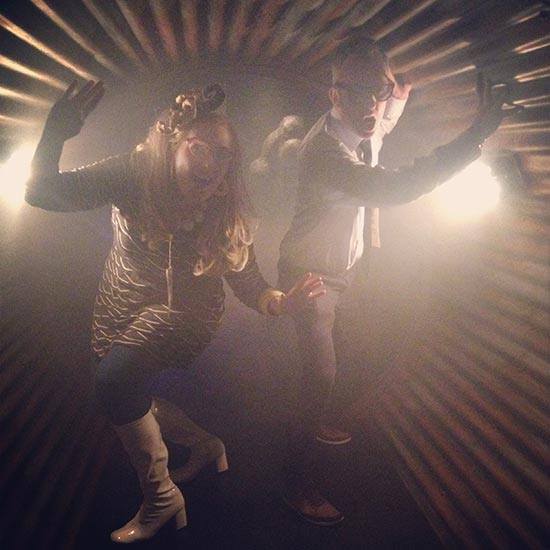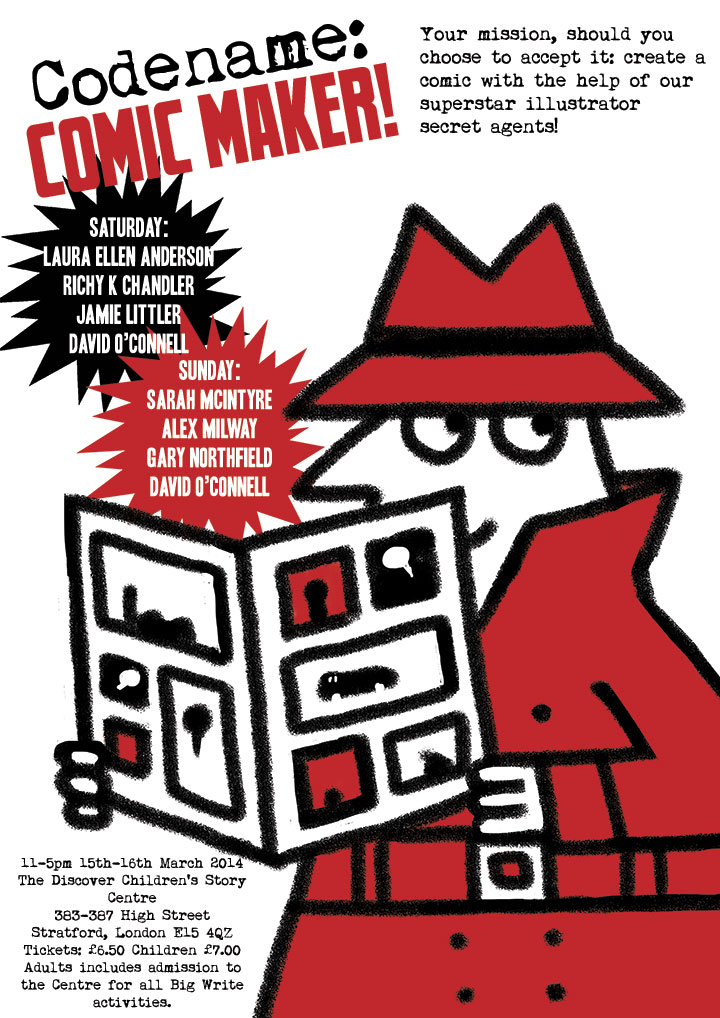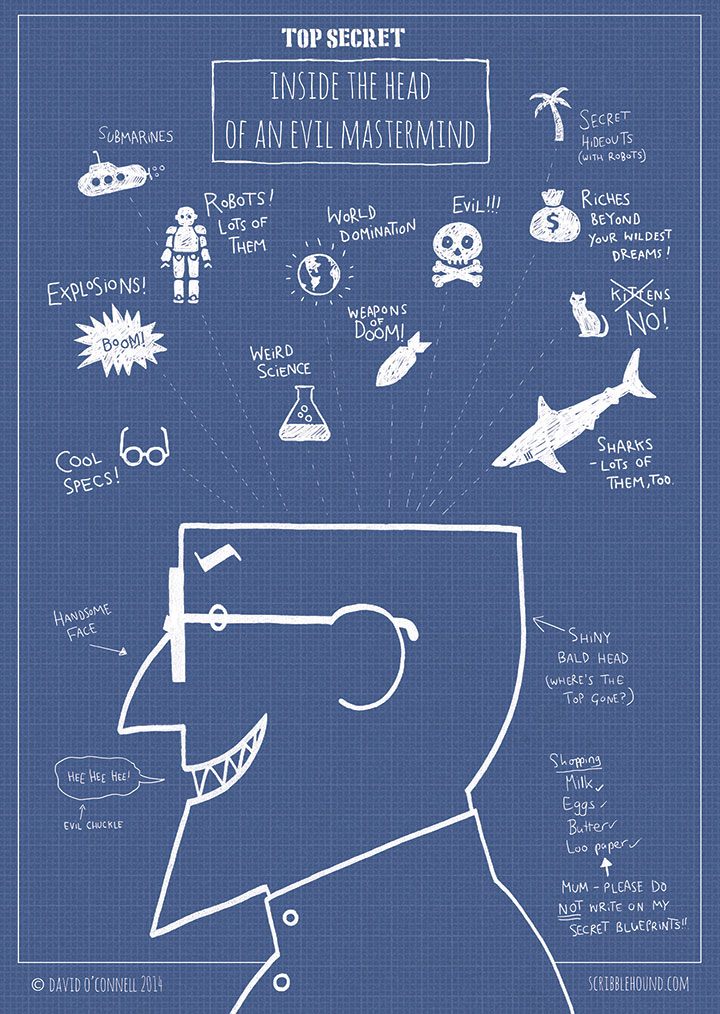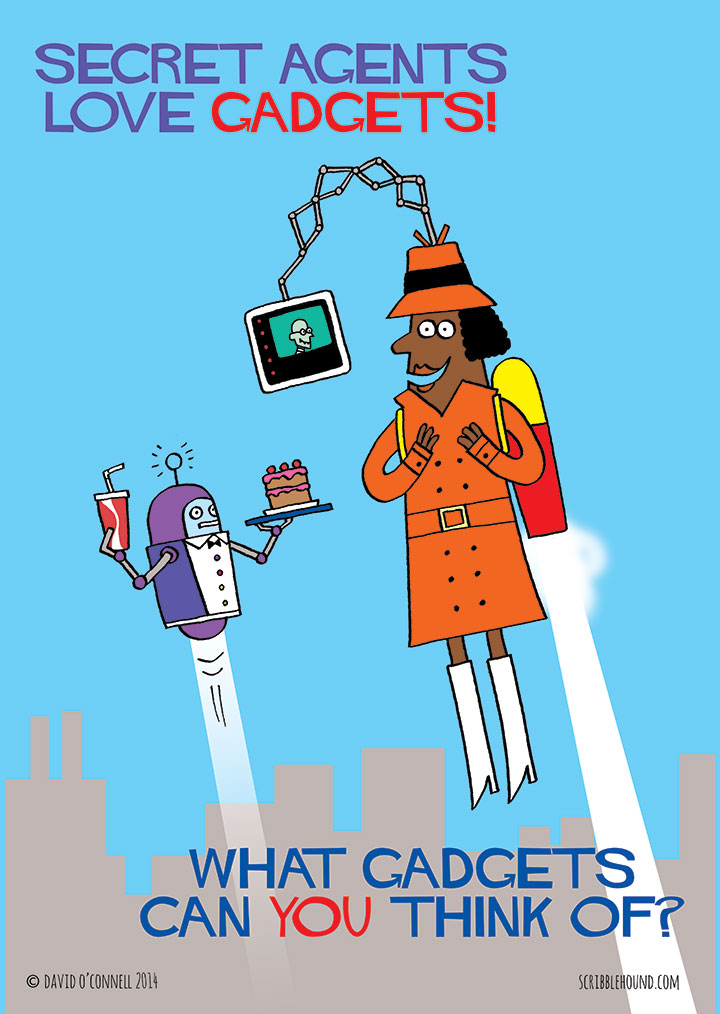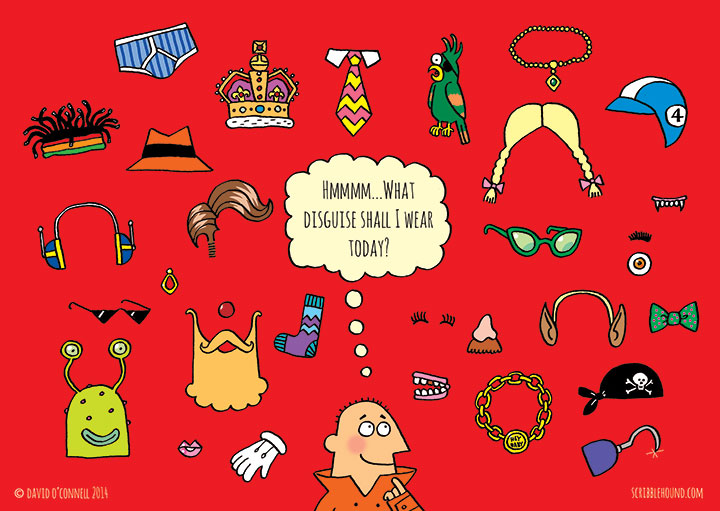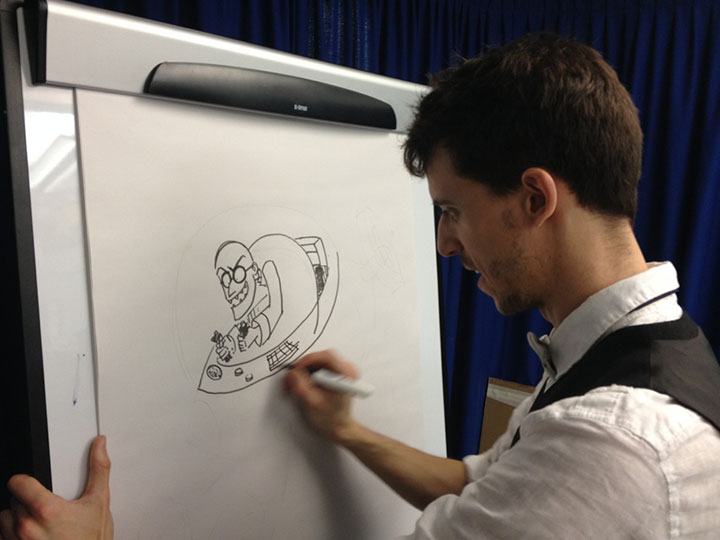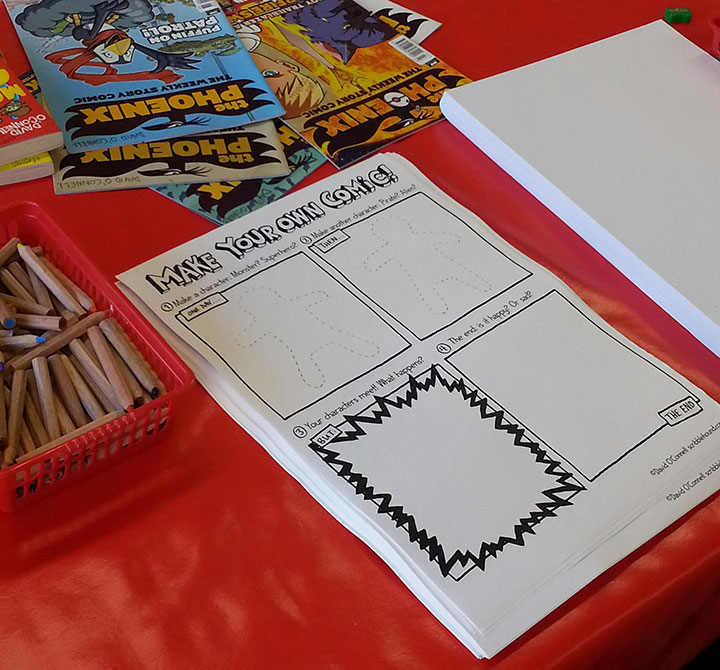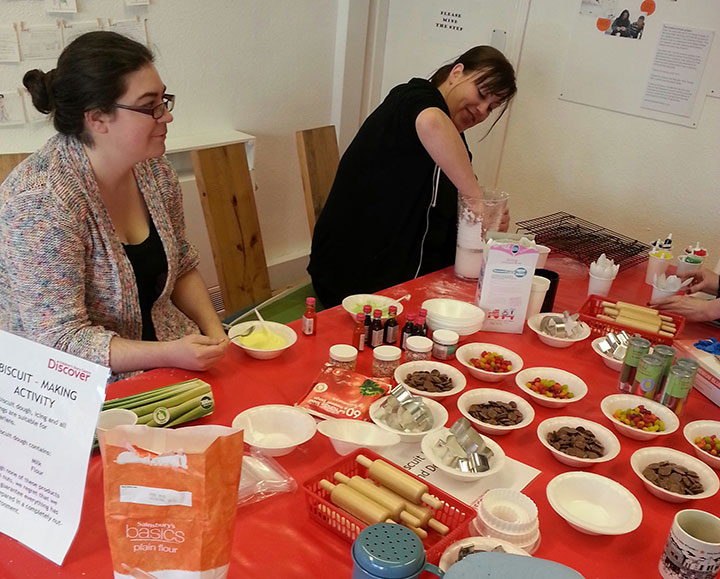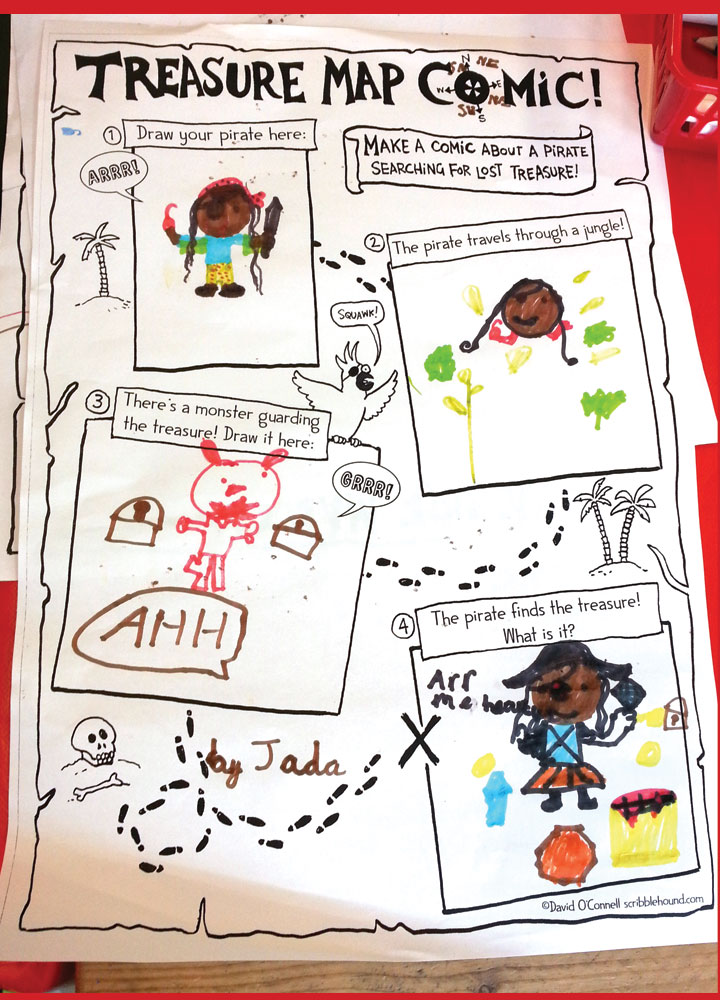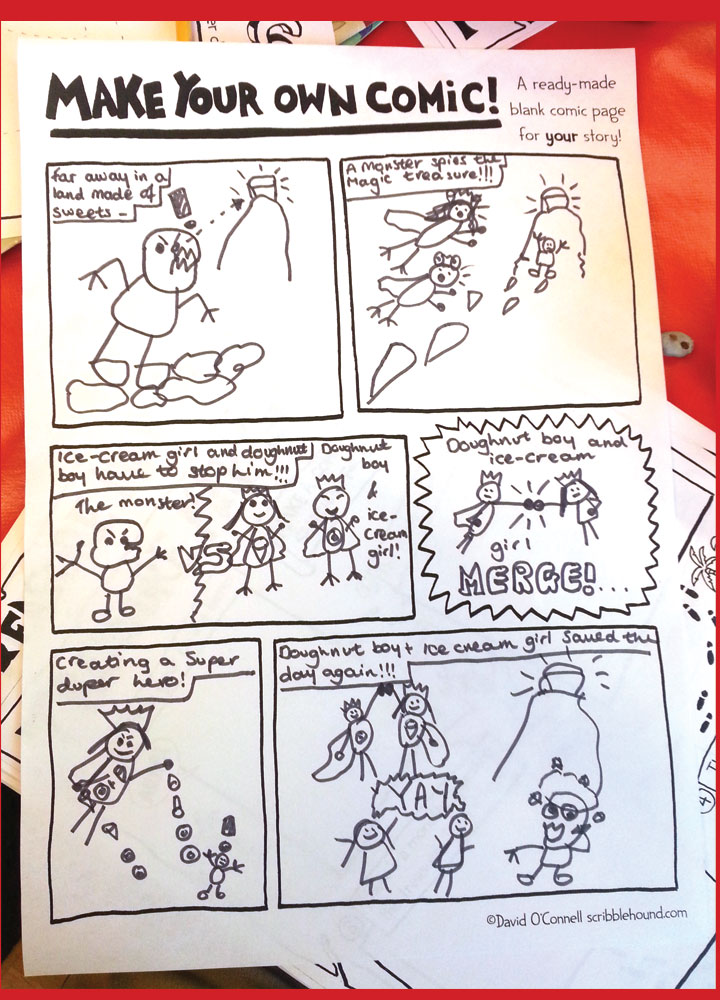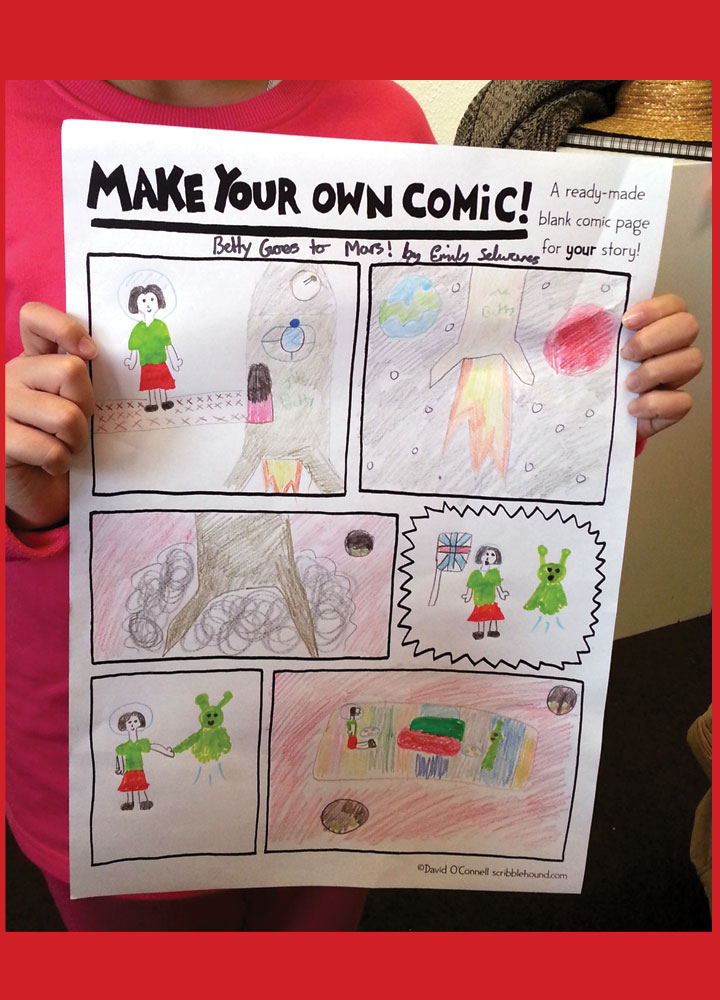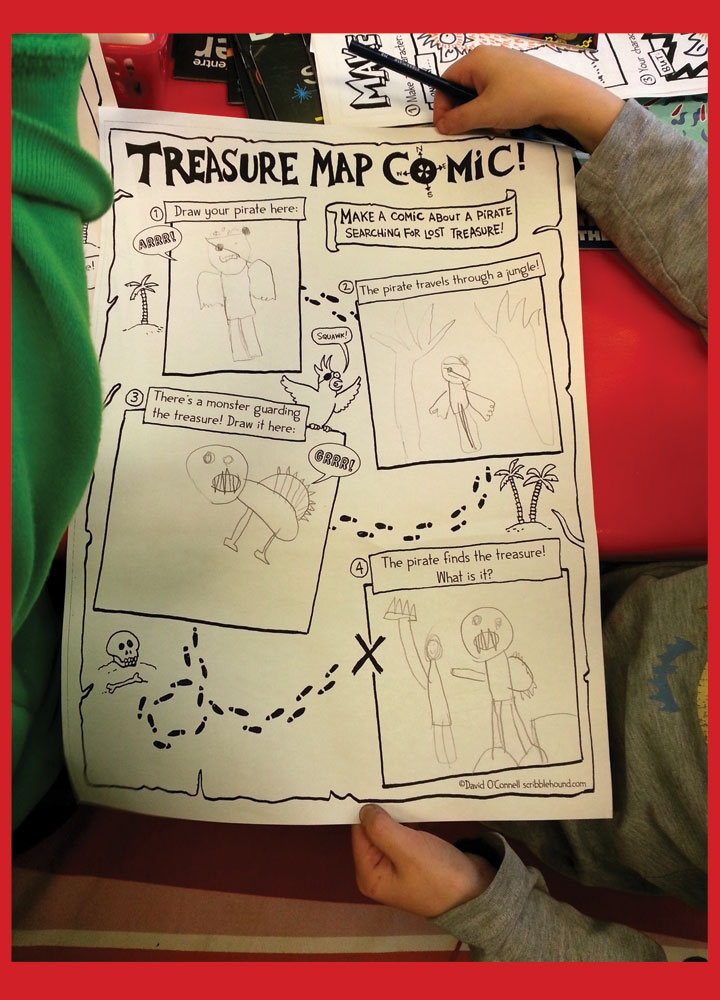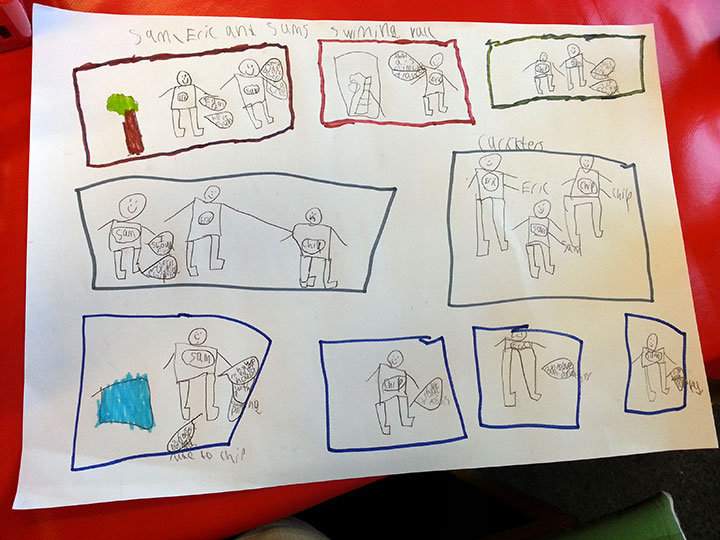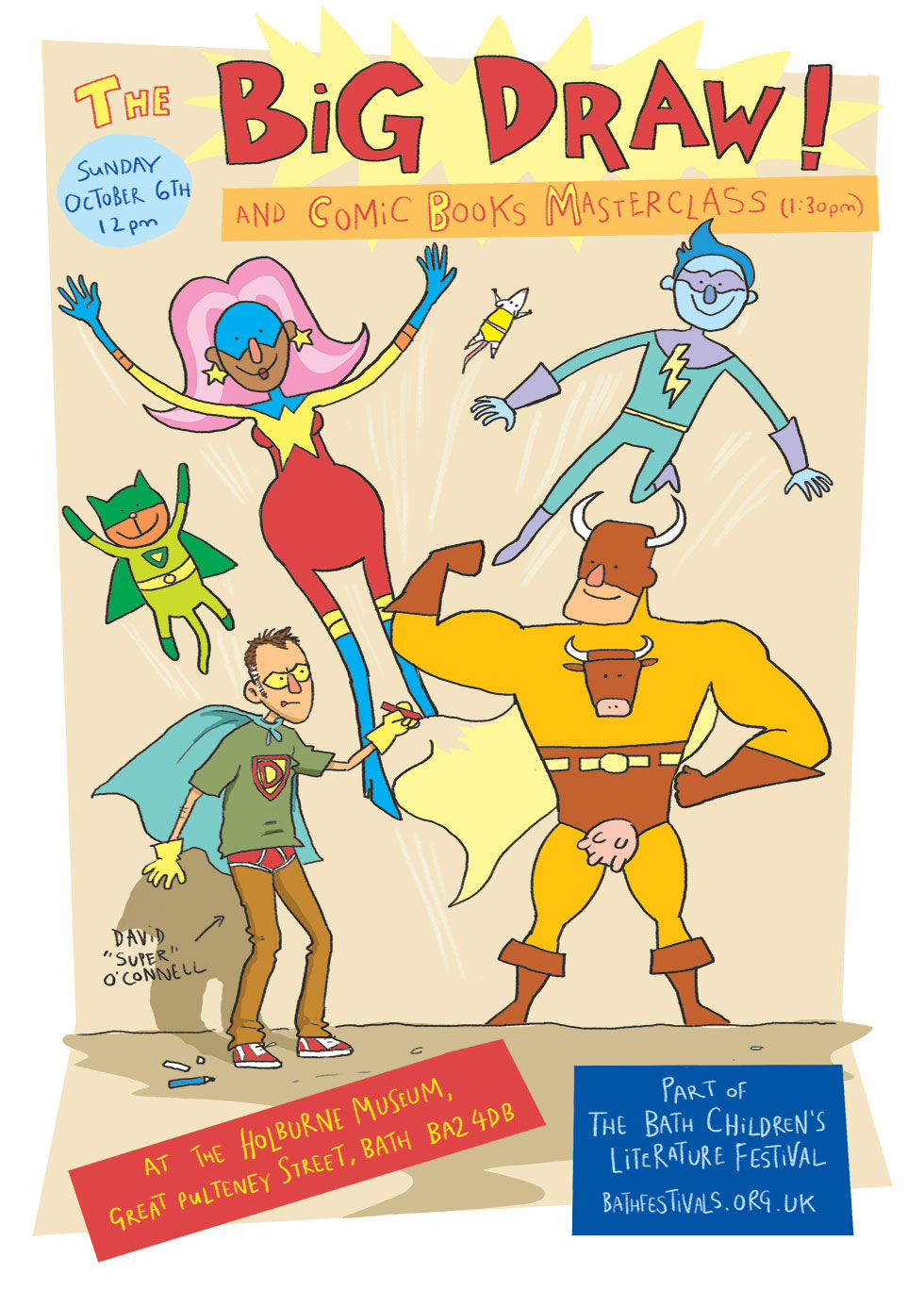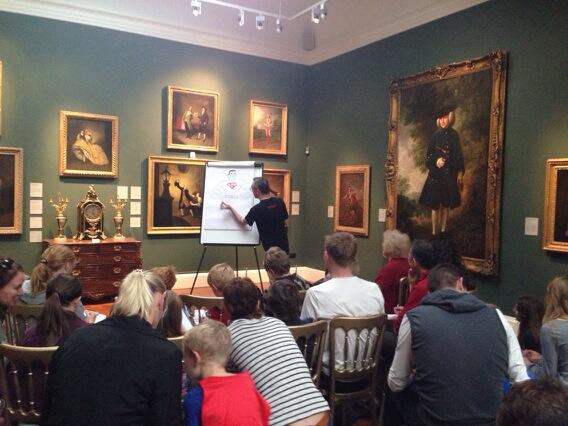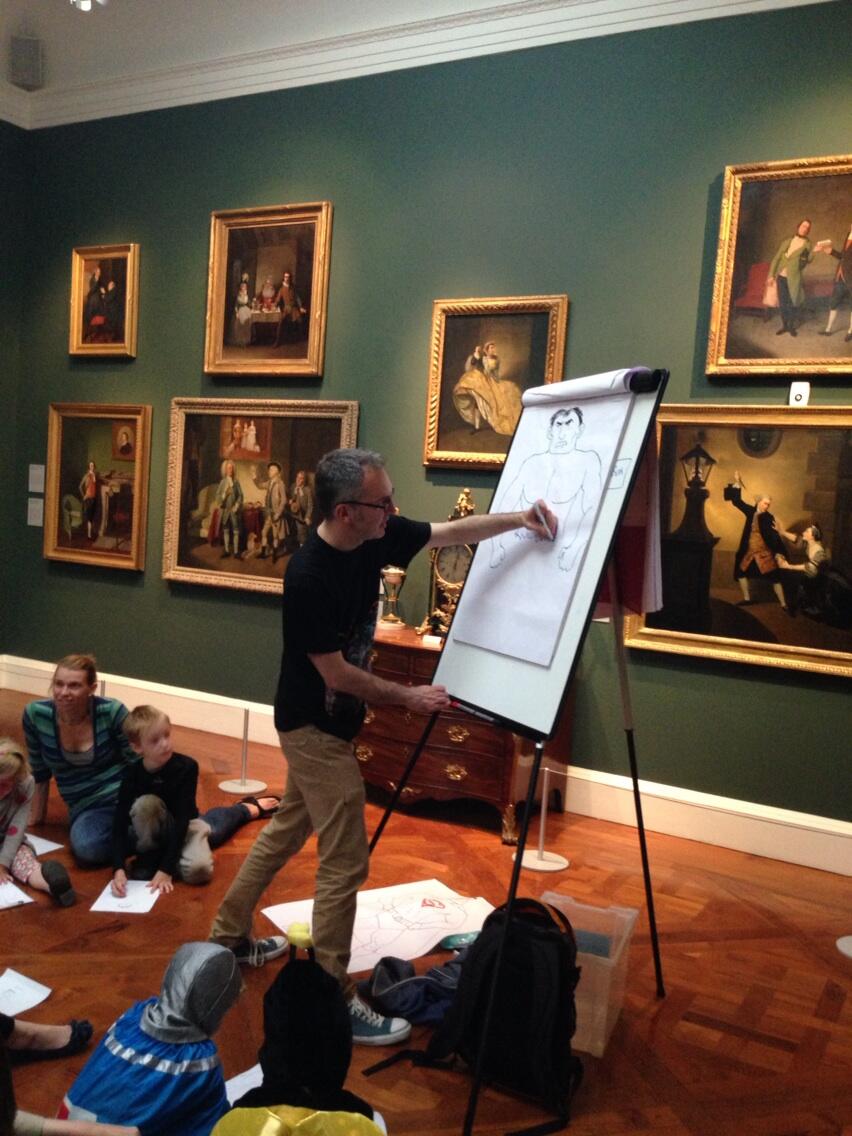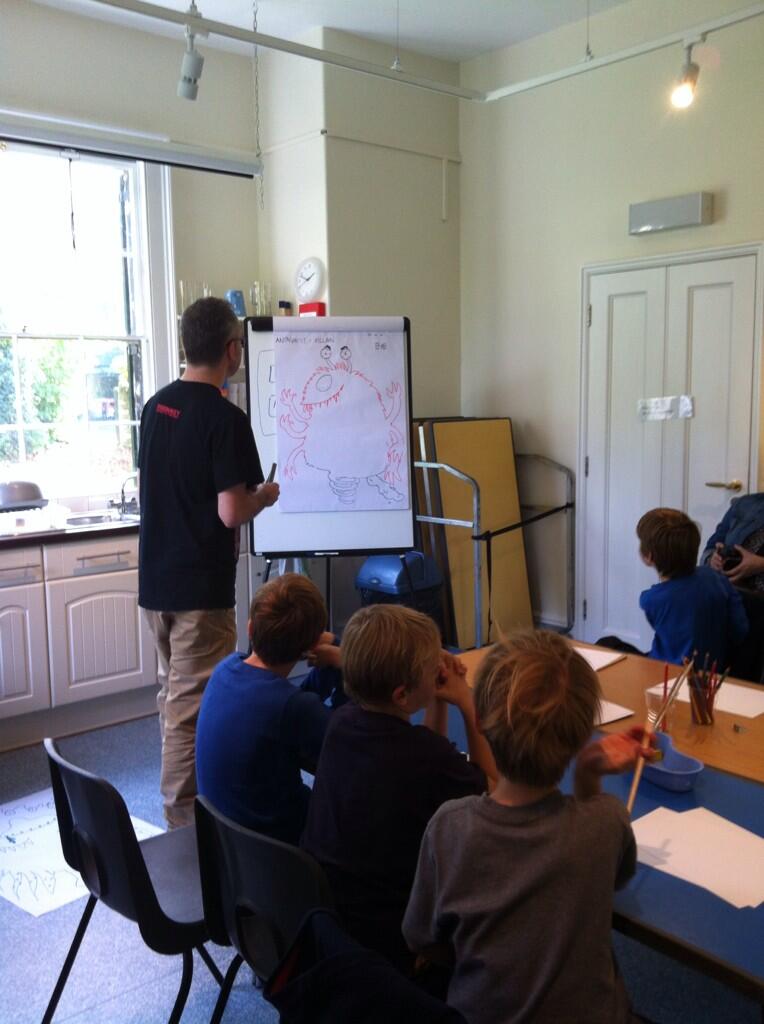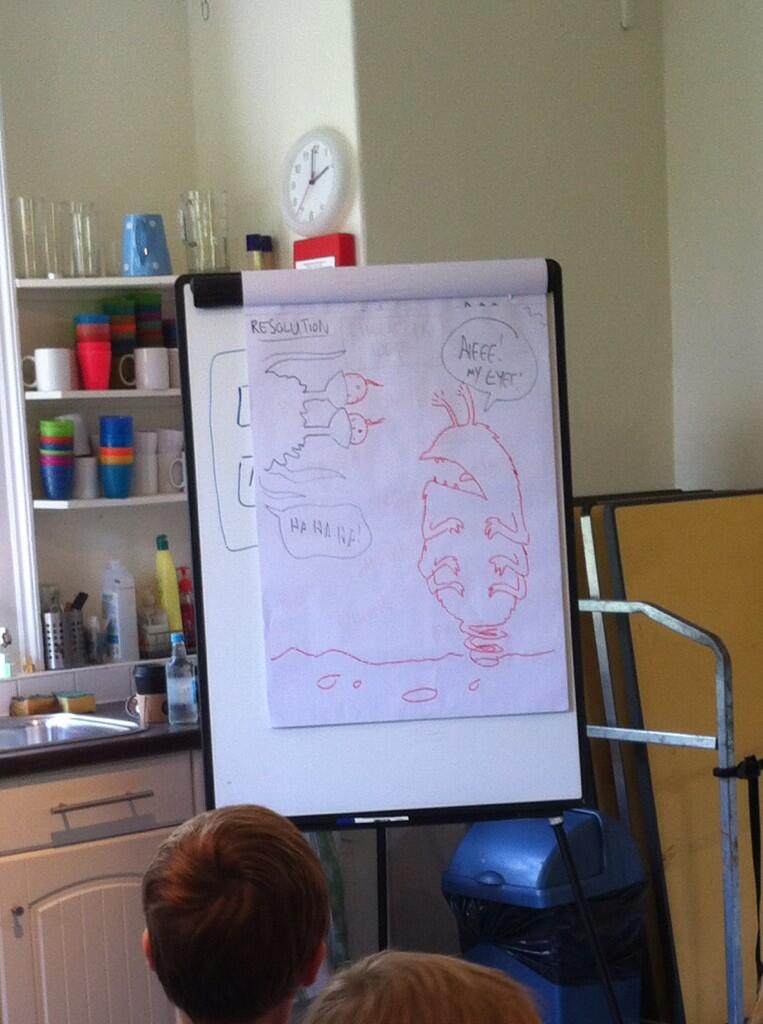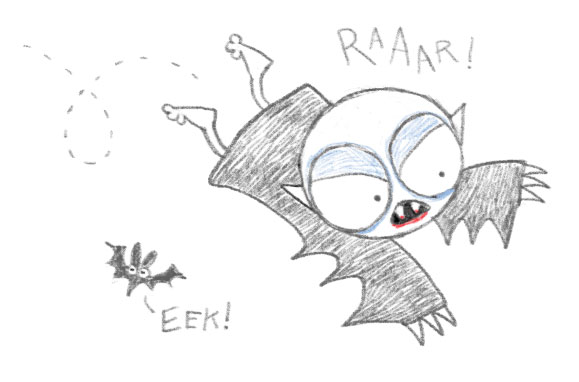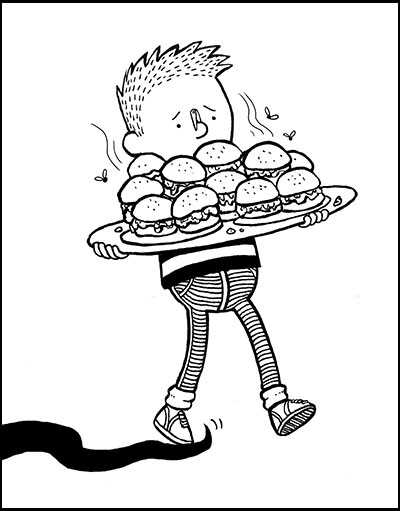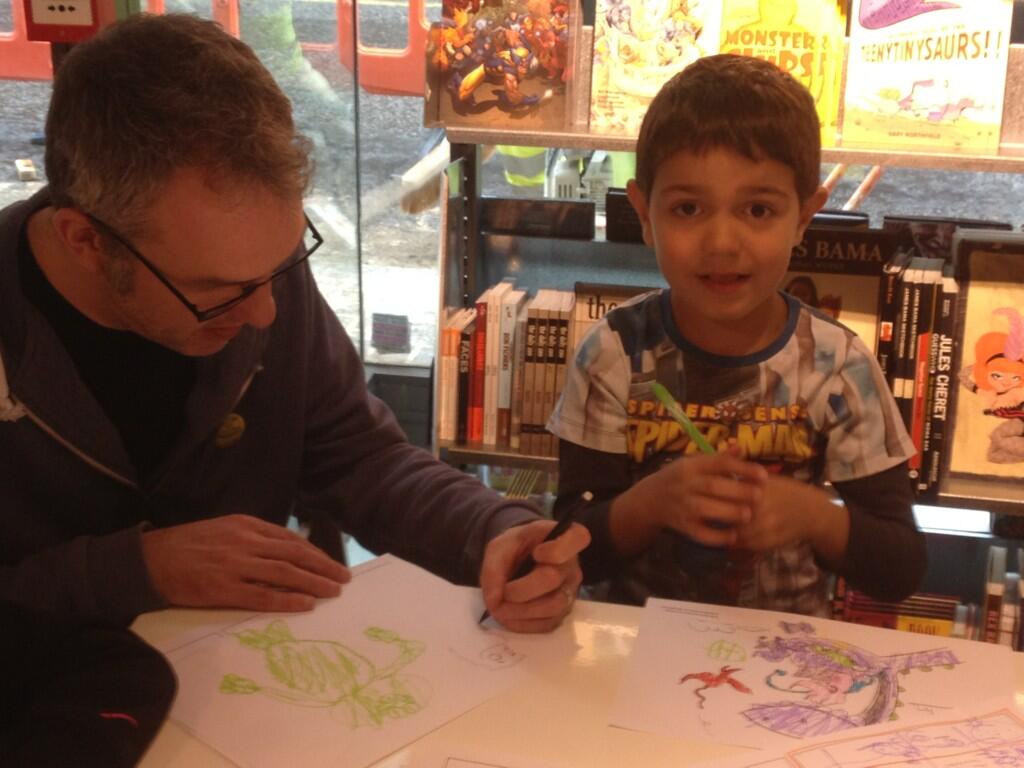Books
A second book of Sam Watkin‘s Creature Teacher series came out in August with me on art duties again. Creature Teacher Goes Wild is set at a theme park which meant lots of fun things to draw. Here’s a bit when Mr Hyde and the gang are on their way to Wilf’s Wild Adventure Theme Park – it gets messy pretty soon afterwards:
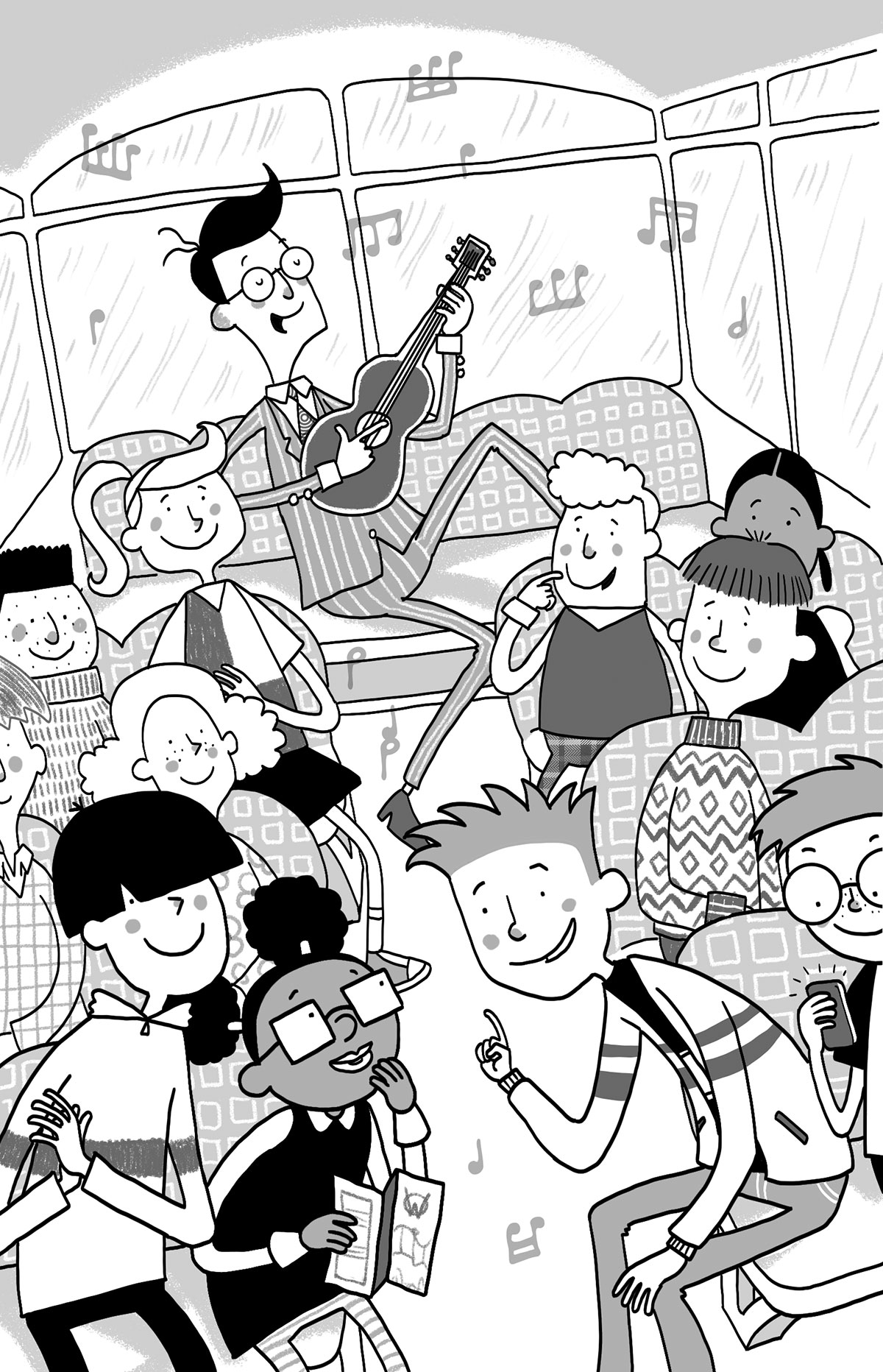
There’s another Creature Teacher book out very soon – next week in fact! Creature Teacher Science Shocker introduces a new character who’s more than a match for Creature – but who is it?
The fourth CT book is due out in July and I’ll be drawing the illos for that any day – can’t wait to get started!
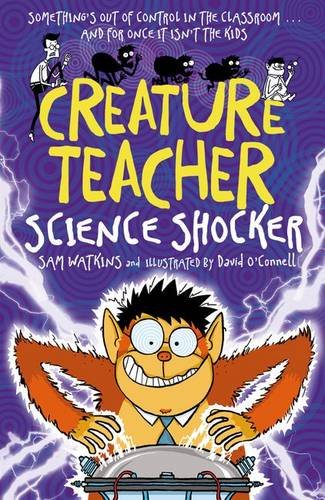
CT is also coming out in Turkish which is very exciting. I love seeing books I’m involved with coming out in different languages!
Speaking of foreign editions, JAMPIRES is going to be coming out in Korean which should be really interesting to see as it’s such an attractive written language. My fab co-author, Sarah McIntyre, and I donned our Jampire gear for a spooky Hallowe’en window-painting session at the wonderful GOSH! Comics in London back in October.
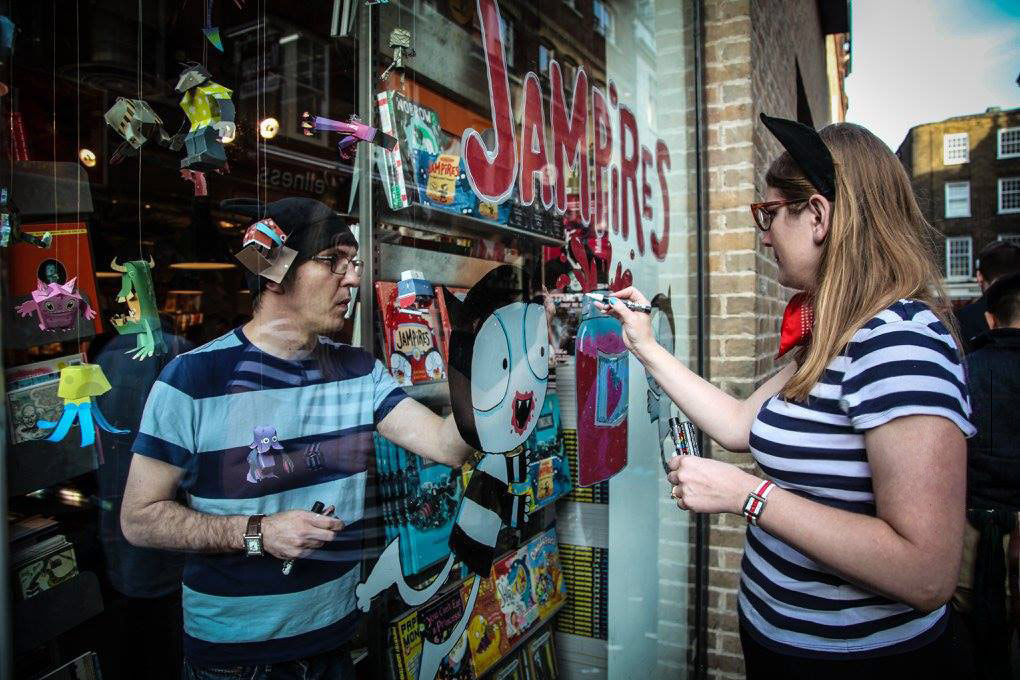
It’s very hard to paint on glass, never mind back-to front. I’ve borrowed these photos from GOSH’s Facebook page – they’re both taken by Mauricio Molizane De Souza and there’s plenty more of his ace work to be seen there too.
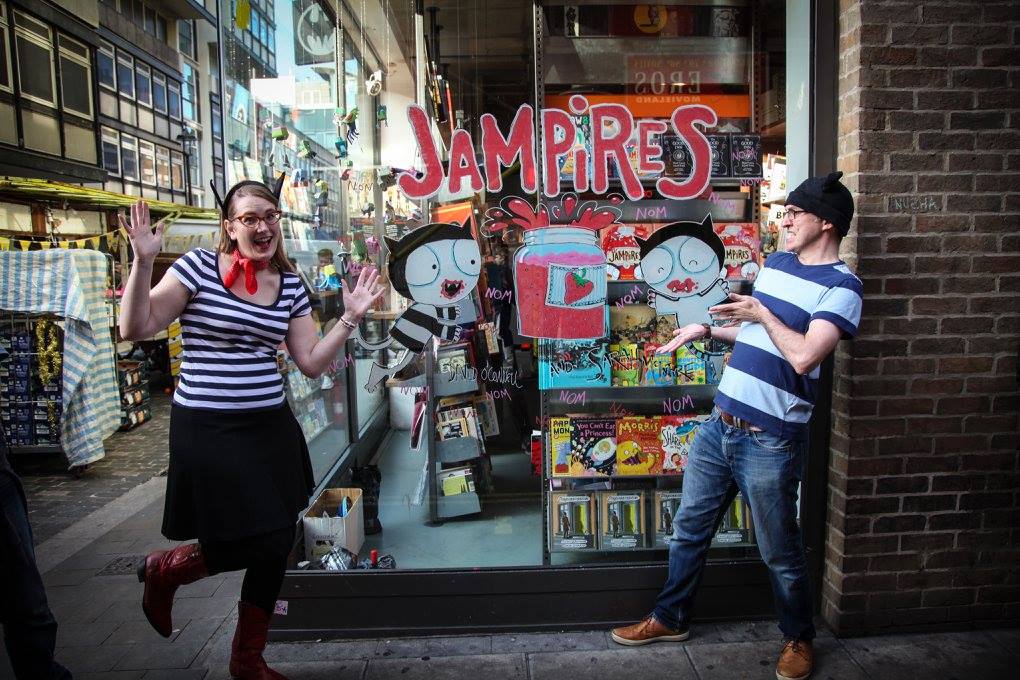
I’ve was very pleased to be invited to join Alex Milway and Gary Northfield at the Discover Children’s Story Centre‘s summer Storyfest that took place at the Queen Elizabeth Olympic Park in Stratford in July.
We talked about our books – all of them funny books – having visited the schools involved in the previous weeks to see what kind of funny stories they could come up with themselves.
It had to be one of the hottest days of the year – not a day to be dressed up as a lion fighting a zebra Roman gladiator.
Yes, dear reader, that is me in the furry onesie, having taken on gladiator Gary, and in the middle of my (very dramatic) death throes. A career highlight.
Finally, I’ve recently got to see the artwork for When I’m a Monster Like You, Dad!, the picture book I wrote that is being illustrated by Francesca Gambatesa. It’s been ages coming (for publisher scheduling reasons) and I was over the moon to see the final images. Francesca’s done such a great job so I couldn’t be more happy!
The second book in our collaboration is in production now and will be out next year some time, but WIMLY (as I call it) is out in the beginning of June – just in time for Father’s Day. I’ll be talking a lot more about this before then, but here is one spread from inside just to whet the appetite:
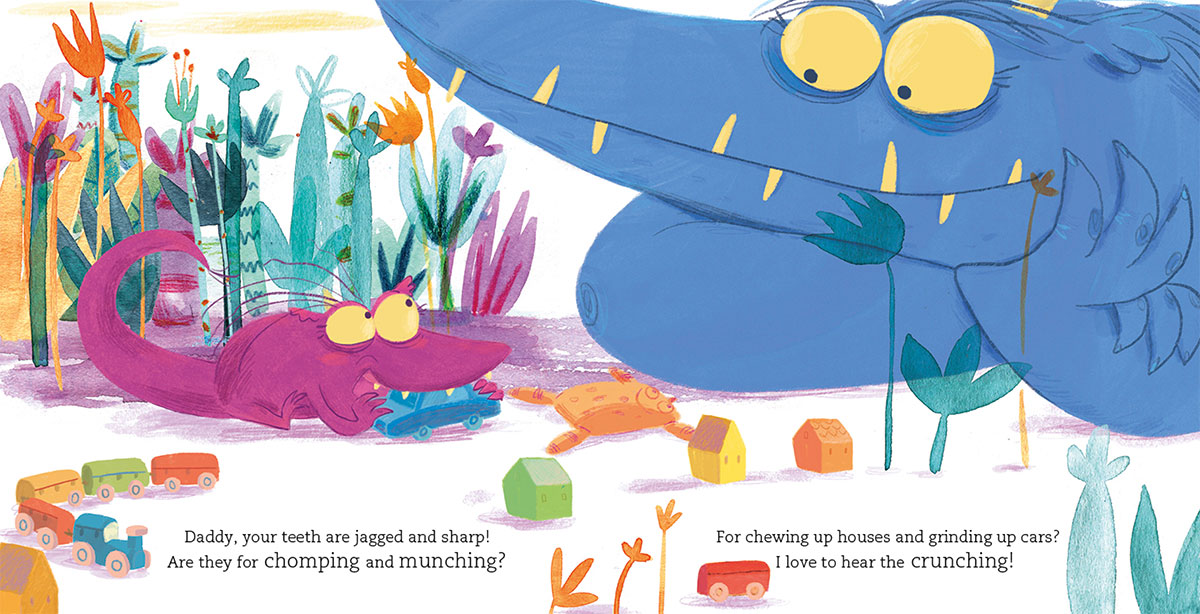
Now: time to look forward to the challenges of 2016. Onwards!
